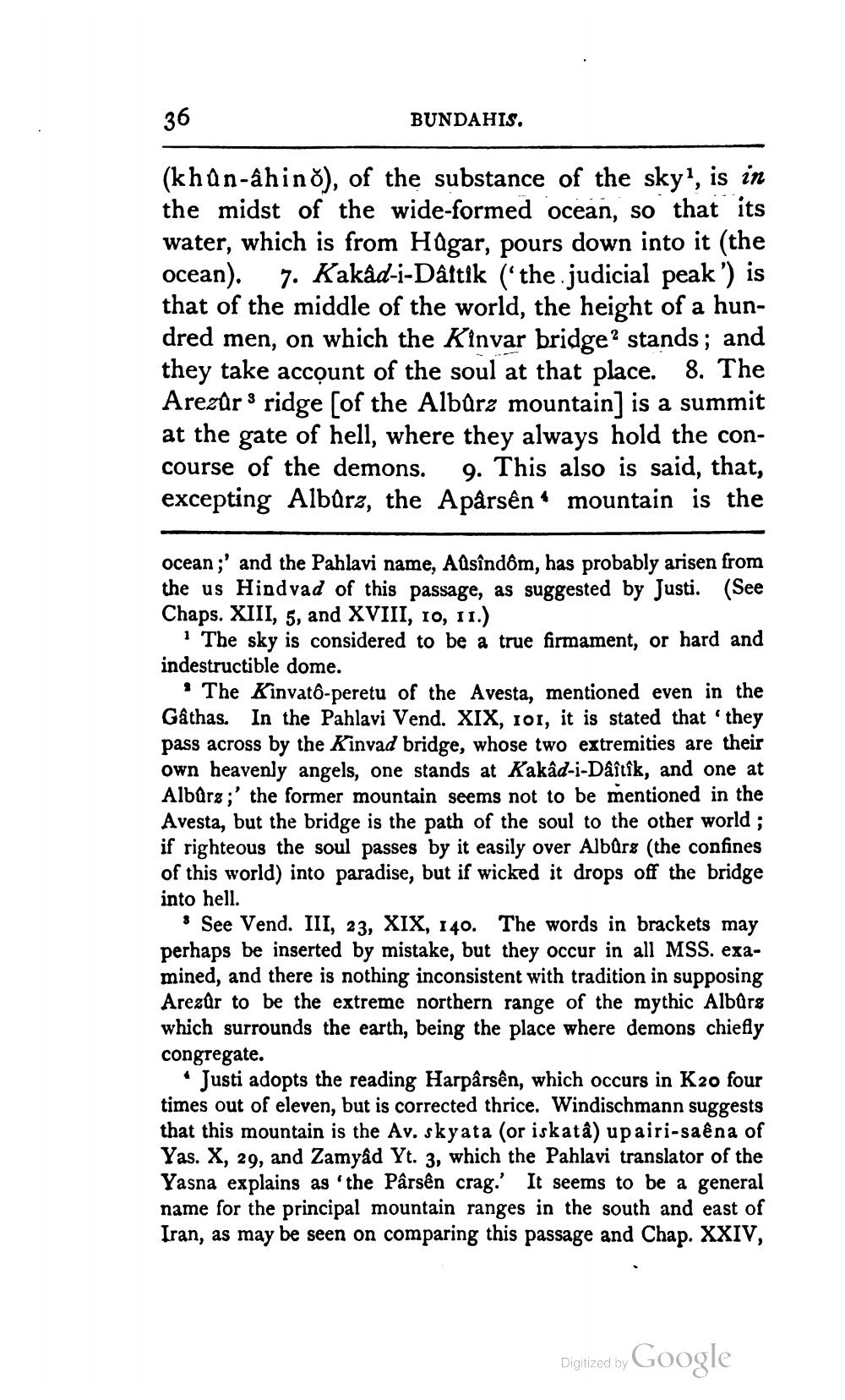________________
36
BUNDAHIS.
(khan-ahino), of the substance of the sky', is in the midst of the wide-formed ocean, so that its water, which is from Hagar, pours down into it (the ocean). 7. Kakâd-i-Daftik (the judicial peak') is that of the middle of the world, the height of a hundred men, on which the Kinvar bridge? stands; and they take account of the soul at that place. 8. The Arezûr : ridge (of the Albûra mountain] is a summit at the gate of hell, where they always hold the concourse of the demons. 9. This also is said, that, excepting Albarz, the Apârsên* mountain is the
ocean;' and the Pahlavi name, Ausîndôm, has probably arisen from the us Hindvad of this passage, as suggested by Justi. (See Chaps. XIII, 5, and XVIII, 10, 11.)
· The sky is considered to be a true firmament, or hard and indestructible dome.
• The Kinvato-peretu of the Avesta, mentioned even in the Gâthas. In the Pahlavi Vend. XIX, 101, it is stated that they pass across by the Kinvad bridge, whose two extremities are their own heavenly angels, one stands at Kakâd-i-Dâîtîk, and one at Albârx;' the former mountain seems not to be mentioned in the Avesta, but the bridge is the path of the soul to the other world ; if righteous the soul passes by it easily over Albürs (the confines of this world) into paradise, but if wicked it drops off the bridge into hell.
* See Vend. III, 23, XIX, 140. The words in brackets may perhaps be inserted by mistake, but they occur in all MSS. examined, and there is nothing inconsistent with tradition in supposing Arezûr to be the extreme northern range of the mythic Albürs which surrounds the earth, being the place where demons chiefly congregate.
Justi adopts the reading Harpârsên, which occurs in K20 four times out of eleven, but is corrected thrice. Windischmann suggests that this mountain is the Av. skyata (or iskatâ) up airi-saệna of Yas. X, 29, and Zamyâd Yt. 3, which the Pahlavi translator of the Yasna explains as 'the Pârsên crag. It seems to be a general name for the principal mountain ranges in the south and east of Iran, as may be seen on comparing this passage and Chap. XXIV,
Digitized by
Digitized by Google




